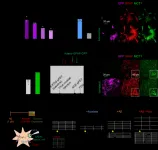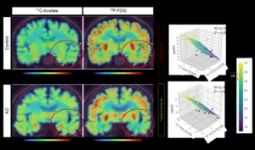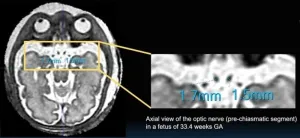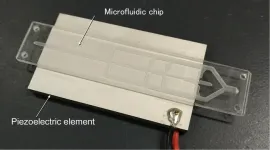(Press-News.org)
Recently, a team of South Korean scientists led by Director C. Justin LEE of the Center for Cognition and Sociality within the Institute for Basic Science made a new discovery that can revolutionize both the diagnosis and treatment of Alzheimer’s Disease. The group demonstrated a mechanism where the astrocytes in the brain uptake elevated levels of acetates, which turns them into hazardous reactive astrocytes. They then went on further to develop a new imaging technique that takes advantage of this mechanism to directly observe the astrocyte-neuron interactions.
Alzheimer’s disease (AD), one of the major causes of dementia, is known to be associated with neuroinflammation in the brain. While traditional neuroscience has long believed that amyloid beta plaques is been the cause, treatments that target these plaques have had little success in treating or slowing the progression of Alzheimer’s disease.
On the other hand, Director C. Justin LEE has been a proponent of a novel theory that reactive astrocytes are the real culprit behind Alzheimer’s disease. Reactive astrogliosis, a hallmark of neuroinflammation in AD, often precedes neuronal degeneration or death.
Lee’s research team previously reported that reactive astrocytes and the monoamine oxidase B (MAO-B) enzyme within these cells can be utilized as therapeutic targets for AD. Recently, they also confirmed the existence of a urea cycle in astrocytes and demonstrated that the activated urea cycle promotes dementia. However, despite the clinical importance of reactive astrocytes, brain neuroimaging probes that can observe and diagnose these cells at a clinical level have not yet been developed.
In this latest research, Lee’s team used positron emission tomography (PET) imaging with radioactive acetate and glucose probes (11C-acetate and 18F-FDG) to visualize the changes in neuronal metabolism in AD patients.
Dr. NAM Min-Ho, one of the first authors of this paper, stated, “This study demonstrates significant academic and clinical value by directly visualizing reactive astrocytes, which have recently been highlighted as a main cause of AD.”
Furthermore, they demonstrated that acetate, the main component of vinegar, is responsible for promoting reactive astrogliosis, which induces putrescine and GABA production and leads to dementia. First, the researchers demonstrated that reactive astrocytes excessively uptake acetate through elevated monocarboxylate transporter-1 (MCT1) in rodent models of both reactive astrogliosis and AD (Figure 1A to 1F). It was discovered that the elevated acetate uptake is associated with reactive astrogliosis and boosts the aberrant astrocytic GABA synthesis when amyloid-beta, a well-known toxin protein in AD, is present (Figure 1G & 1H).
The researchers showed that PET imaging with 11C-acetate and 18F-FDG can be used to visualize the reactive astrocyte-induced acetate hypermetabolism and associated neuronal glucose hypometabolism in the brains with neuroinflammation and AD (Figure 2A). Moreover, when the researchers inhibited reactive astrogliosis and astrocytic MCT1 expression in the AD mouse model, they were able to reverse these metabolic alterations.
Dr. YUN Mijin commented, “Reactive astrocytes showed metabolic abnormalities that excessively uptake acetate compared to normal state. We found that the acetate plays an important role in promoting astrocytic inflammatory responses.”
By using this new imaging strategy, the group discovered that alterations in acetate and glucose metabolism were consistently observed in the AD mouse model and human AD patients (Figure 3A). They were able to confirm that a strong correlation exists between the patient’s cognitive function and the PET signals of both 11C-acetate and 18F-FDG (Figure 3B). These results suggest that acetate, previously considered an astrocyte-specific energy source, can facilitate reactive astrogliosis and contribute to the suppression of neuronal metabolism.
Dr. RYU Hoon remarked, “By demonstrating that acetate not only acts as an energy source for astrocytes but also facilitates reactive astrogliosis, we suggested a new mechanism that induces reactive astrogliosis in brain diseases.”
Until now, amyloid beta (Aβ) has been suspected as the main cause of AD, and thus they have been the main focus of most dementia research. Unfortunately, PET imaging targeting Aβ has had limitations in diagnosing patients, and drugs aimed at removing it as a target for AD treatment have all failed so far. However, this study offers us a new possibility of using 11C-acetate and 18F-FDG PET imaging for early diagnosis of AD. In addition, the newly discovered mechanism of reactive astrogliosis through acetate and MCT1 transporter suggests a new target for AD treatment.
Dr. C. Justin LEE stated, “We confirmed a significant recovery when inhibiting MCT1, astrocyte-specific acetate transport, in an AD animal model," and added, "We expect MCT1 can be a new therapeutic target for AD.”
END
Barcelona, Spain – 16 April 2023: A region-wide study in more than 50,000 patients with atrial fibrillation has found reduced risks of stroke and transient ischaemic attack in those who started statins within a year of diagnosis compared with those who did not. The findings are presented at EHRA 2023, a scientific congress of the European Society of Cardiology (ESC).1
“Our study indicates that taking statins for many years was even more protective against stroke than short-term use,” said study author Ms. Jiayi Huang, a PhD student at the University of Hong Kong, China.
Atrial fibrillation is the most common ...
Honolulu, HI | April 16, 2023—An award-winning Scientific Online Poster presented during the 2023 ARRS Annual Meeting on the island of Oahu explained how the novel technique of three-dimensional (3D) slice-to-volume (SVR) MRI allows for precise delineation and measurement of the fetal optic pathway (FOP).
Noting the limited fetal presentation and low reproducibility of ultrasound-based techniques, as well as conventional MRI’s inconsistencies in FOP visualization due to low resolution (i.e., large slice thickness), “our preliminary results nevertheless demonstrate the promises and utility of this technique,” said Eric Juang, MS, of Creighton University ...
Honolulu, HI | April 16, 2023—Erik K. Paulson, MD, chair of the radiology department at Duke University, has been named the 123rd President of the American Roentgen Ray Society (ARRS) during the opening ceremony of the 2023 ARRS Annual Meeting in Honolulu, HI.
“I am absolutely honored and delighted to serve as the President of our country’s oldest radiology society, a society whose sweet spot is member education,” Dr. Paulson said in his ARRS Annual Meeting opening remarks at ...
**Note: the release below is from the European Congress of Clinical Microbiology & Infectious Diseases (ECCMID 2023, Copenhagen, 15-18 April). Please credit the conference if you use this story**
Measures introduced to reduce transmission of COVID-19 infections during 2020-2021 suppressed transmission of group A streptococcal (GAS) infections, particularly in children. Following the lifting of public health restrictions in the UK in Feb-2022, Group A Streptococcus presentations – including scarlet fever and invasive Group A Strep – rose significantly in England, although iGAS still remained very ...
**Note: the release below is from the European Congress of Clinical Microbiology & Infectious Diseases (ECCMID 2023, Copenhagen, 15-18 April). Please credit the conference if you use this story**
During the 2022-2023 winter season Denmark experienced a surge in infections caused by group A streptococci (GAS), including the more dangerous, invasive types of infections (iGAS). Incidence of iGAS is highest among the elderly, but the largest relative increase from previous seasons was seen among children. The study is being presented to the European Congress of Clinical Microbiology & Infectious Diseases (ECCMID 2023, Copenhagen, ...
**Note: the release below is from the European Congress of Clinical Microbiology & Infectious Diseases (ECCMID 2023, Copenhagen, 15-18 April). Please credit the conference if you use this story**
New research from France shows that infections cause by Group A Streptococcus (GAS) fell by 80% as the first COVID lockdown took effect in March 2020 and stayed at low levels until March 2022, from which point they increased by 18% a month to rise well above pre-COVID levels.
The study is being presented at the European Congress of Clinical Microbiology & Infectious Diseases in Copenhagen, Denmark (15-18 ...
**Note: the release below is from the European Congress of Clinical Microbiology & Infectious Diseases (ECCMID 2023, Copenhagen, 15-18 April). Please credit the conference if you use this story**
Antibiotics help to fight bacterial infections, but they can also harm the helpful microbes living in the gut, which can have long-lasting health consequences.
Now new research being presented at this year’s European Congress of Clinical Microbiology & Infectious Diseases (ECCMID) in Copenhagen, Denmark (15-18 April) has identified ...
*Note: this is a joint press release from the European Congress of Clinical Microbiology & Infectious Diseases (ECCMID) and The Lancet Respiratory Medicine. Please credit both the congress and the journal in your stories*
A major UK study has discovered that the disturbed sleep patterns in patients hospitalised with COVID-19 was likely to be a driver of breathlessness.
The study of patients in 38 institutions across the UK was led by University of Manchester and Leicester, presented at the European Congress of Clinical Microbiology & Infectious Diseases (Copenhagen, 15-18 April) and published in The Lancet ...
About The Study: Among adults with laboratory-confirmed Clostridioides difficile infection (CDI) with one or more prior CDI episodes in the last six months and those with primary CDI at high risk for recurrence, high-dose VE303 (a novel oral microbiome-directed therapy composed of nonpathogenic, nontoxigenic, commensal strains of Clostridia) prevented recurrent CDI compared with placebo. A larger, phase 3 study is needed to confirm these findings.
Authors: Jeffrey L. Silber, M.D., of Vedanta Biosciences Inc., in Cambridge, Massachusetts, is the corresponding author.
To access the embargoed study: Visit our For The Media website at this link https://media.jamanetwork.com/
(doi:10.1001/jama.2023.4314)
Editor’s ...
Plastic debris particles smaller than 5 mm in size, known as microplastics (MPs), are a serious environmental concern. Formed by the breaking down of plastic waste due to wear and tear and sunlight or produced by fiber waste in laundry wastewater and as microbeads in beauty products, they adsorb and introduce harmful chemicals that pollute the environment. By 2050, MPs might outnumber the fish in the oceans. Under these circumstances, the collection and removal of MPs from water are crucial.
Conventionally, MPs are collected by filtering water through meshes. ...





